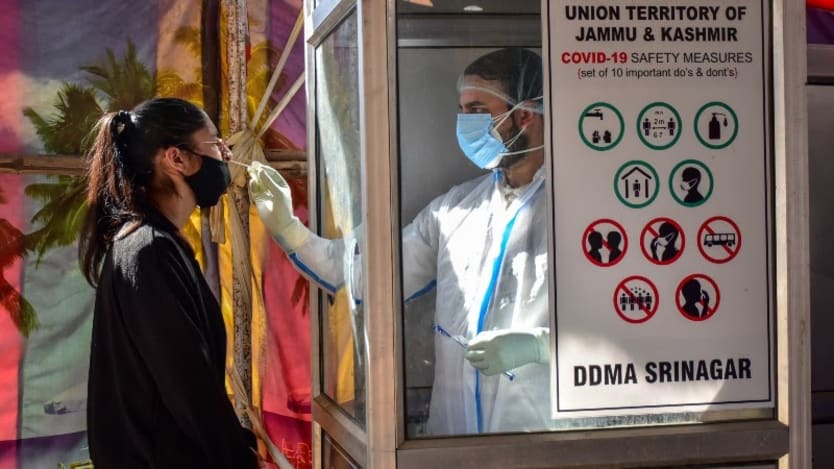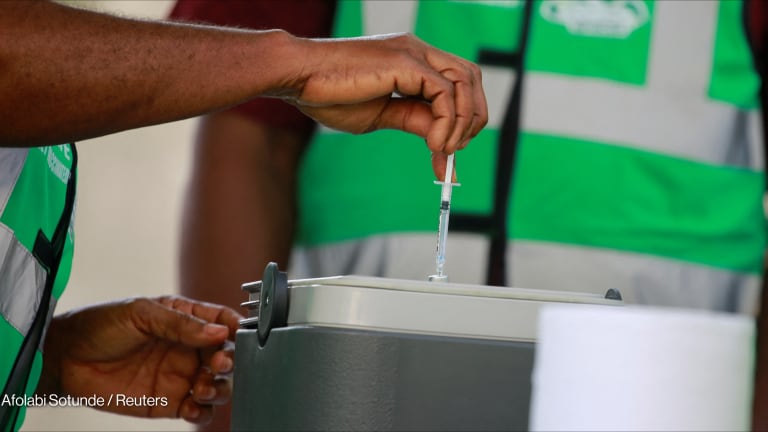
India and Mexico were two of the most dangerous places for health care workers in 2020 because of the COVID-19 pandemic, according to a new interactive map. While ongoing conflict remains the biggest driver of violence and threats against health care, panelists at a launch event for the map said the coronavirus has created a new dimension of violence against health care workers, facilities, and transport that puts overall care in jeopardy.
“Health workers have been rightfully praised as heroes during the COVID-19 pandemic. But around the world, they endured disturbing levels of threats and violence from individuals, but also from governments, militias, and police,” said Christina Wille, director at Insecurity Insight and co-developer of the map, which shows the location, perpetrators, and weapons used in reported incidents.
In Myanmar, a marked World Health Organization vehicle transporting COVID-19 testing samples came under gunfire, injuring a health worker and killing the driver. In Cameroon, a supply of hand sanitizers was destroyed by a rebel militia. And in Yemen, armed men in military vehicles stormed a health facility and confiscated COVID-19 disinfecting supplies.
According to the map — developed by Insecurity Insight with support from MapAction and the Safeguarding Health in Conflict Coalition — over a third of the 1,172 cases of violence or threats logged for 2020 were related to COVID-19. Such incidents included arson of COVID-19 testing facilities, harassment of health workers on their way home, and violent responses to mask requirements. India alone accounted for 128 incidents, with Mexico recording 49.
It’s likely that figures are much higher, as many cases go unreported, said Erica Burton, senior adviser of nursing and health policy at the International Council of Nurses, during the panel discussion.
A total of 802 incidents detailed on the map were related to conflict. Syria and Afghanistan each recorded over 100 incidents and the deaths of around 20 health workers.
This comes after Médecins Sans Frontières shared that a staff member had been killed in their tent last week in the al-Hol camp for displaced people in northeastern Syria. In a separate incident, three were injured and an MSF staff member’s child was killed in a fire at the camp.
Such incidents are not uncommon. A new report from the International Rescue Committee found that 59% of 237 civilians surveyed had been directly impacted by an attack on health care in Syria over the past decade. Meanwhile, 81% of 74 health workers surveyed said they had a co-worker or patient who had been injured or killed as a result of an attack.
Conflict-related attacks often have a political dimension, with perpetrators wanting to gain a military advantage, hurt enemies, or punish doctors for treating enemies, said Leonard Rubenstein, chair of the Safeguarding Health in Conflict Coalition. Although often driven by fear, COVID-19-related violence can also have a political overlay, he added.
“Not all cases, but in many cases, it’s stimulated by disinformation promoted by people with a political agenda. It can result, too, from a long history of distrust of the health systems — in part because of the inequities in those systems — and so there is a protest element,” he said, adding that the problem should be seen as a continuum, with personal fear and anger on one side and politics on the other.
The map’s research brief lists five driving factors for COVID-19-related violence and threats: objection to facilities being used to treat COVID-19 patients; objection to medical measures, such as testing efforts; objection to public health measures, such as contact tracing or social distancing; objection to health workers voicing concerns about their work; and fear of health workers spreading infections. Civilians carried out 83% of attacks overall, yet police officers in India were frequently named as perpetrators, according to the map.
While there were indeed various hot spots for COVID-19-triggered violence, Wille said it was a truly global crisis, with incidents reported across 79 countries. And there are likely to be long-term effects not just for individuals’ mental health and well-being, but also for health systems, Burton said.
“It leads to increased absenteeism ... attrition, and quite high and concerning rates of intention to leave one's profession,” she said, adding that a mass deficit of staffers will jeopardize the ability of health systems to meet people’s health needs.
Panelists called on governments, international organizations, health care providers, and communities to better support health workers in recognizing the issue, tackling the root causes, holding perpetrators to account, and investing in access to more data.
More disaggregated data on incidents of violence is the only way to create new policies to protect health workers, Burton said.
The release of the map follows a declaration made last year by a cohort of medical and humanitarian organizations for governments to implement domestic laws against such attacks, provide safer working environments, offer mental health support, and tackle the misinformation that can lead to fear and stigmatization.
Aline Salgado, a nurse based in Mexico, said the lack of action in her country thus far makes it seem as though the government doesn't care about the issue. Health workers are “tired, we are really sad … and we really need the authorities doing a lot of work to … [create] a better way to work — with dignity,” she said, adding that people need to recognize that health workers are only trying to help.
“Health workers have been rightfully praised as heroes during the COVID-19 pandemic. But around the world, they endured disturbing levels of threats and violence.”
— Christina Wille, director, Insecurity InsightWille said the map shows how much violence against health care has spread beyond the countries that were previously focused on, adding that the continuously updated resource can help in identifying the people and reasons behind such acts so that they can be addressed.
Burton said this might mean considering larger structural issues such as inequality or misinformation that fuel stigma, mistrust, fear, and discrimination. “Part of the solution definitely lies in addressing these issues that then create the triggers, such as [being] fearful that nurses and doctors and health care workers are spreading the virus,” she said.
For George Thomas, chief orthopedic surgeon at St. Isabel’s Hospital in India, inequity in the country’s health system is to blame for the distrust in health workers.
“Having such a highly expensive and privatized system makes people believe that you will get good care only if you have money. And so when a person dies … there is a feeling that if they had more money, they would have been saved. And this is sometimes taken out as anger against the front-line worker,” he said. Thomas called for health care organizations to look at the different causes of violence in each country, as these may differ.
Political leadership, honest and consistent messaging about the pandemic, and serious engagement with communities to address the outbreak and underlying distrust are key to tackling the problem, Rubenstein said. And while the response must not include repression of those who challenge government policies, perpetrators of violence and threats toward health care must be held to account, he added.
He also urged medical, nursing, and other health groups to become more active in creating visibility and pushing for further support.


